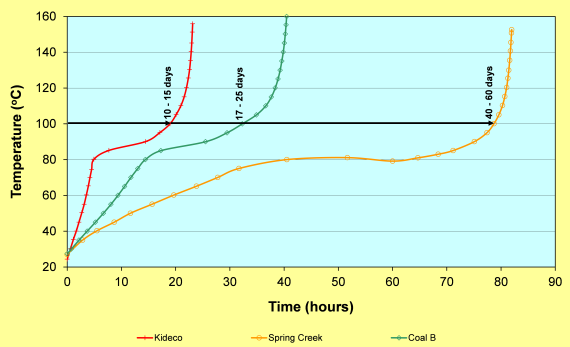SponComSIM™ testing
SponComSIM™ is a test that is designed to mimic coal self-heating for any set of boundary conditions that may exist at a mine, port, power utility or in transit. This test takes into consideration the moisture present in the coal and the surrounding environment, the presence of reactive pyrite and issues associated with seasonal variation. In essence, the test provides a realistic quantification of the spontaneous combustion propensity of coal by accounting for both the intrinsic and extrinsic influences on coal self-heating. The SponComSIM™ test is used to assess whether thermal runaway is possible and if so what is the minimum time for spontaneous combustion events to be initiated. The time obtained is for coal that is present in a loose pile (the worst case scenario) and is equally valid for goaf areas, surface stockpiles and coal in storage (such as shipping holds). SponComSIM™ can also be used to define the time for solid fractured coal to cause spontaneous combustion events which is important for underground mine pillars or compacted stockpiles.

Figure 2: SponComSIM™ test results showing typical coal self-heating behaviour from low mine ambient temperature to thermal runaway, where moisture evaporation moderates the coal self-heating. The x-axis shows laboratory hours for the test and a scaled equivalent in days is shown for spontaneous combustion issues in a loose coal pile on site as documented by Beamish and Beamish (2012).
Downloadable Files:


